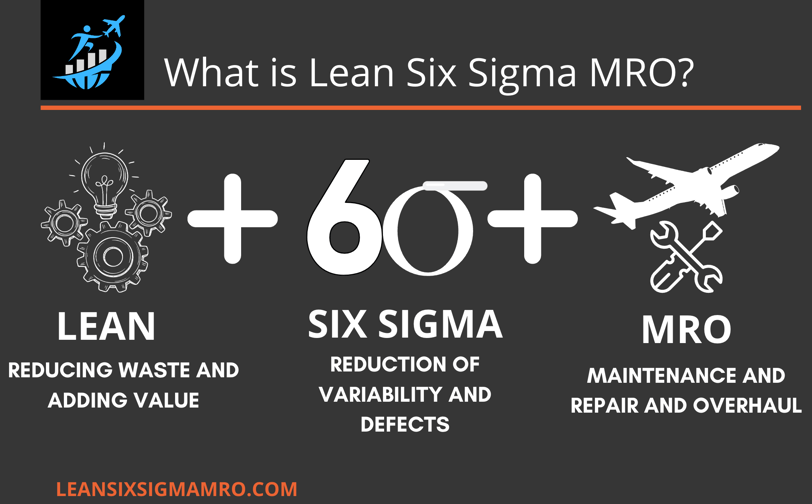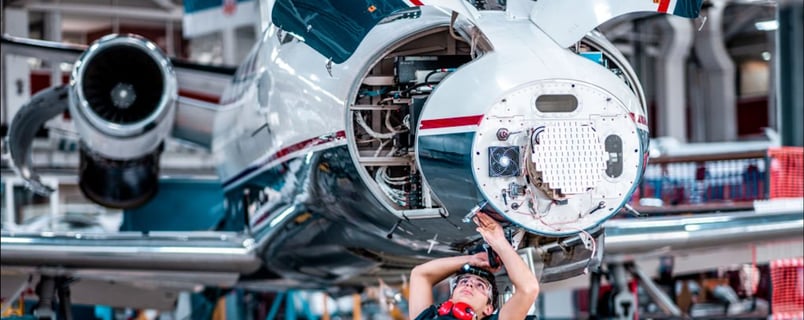What is Lean Six Sigma MRO?
Discover how Lean Six Sigma can revolutionize your MRO operations. Enhancing Efficiency with Lean and Six Sigma in Maintenance!
CONCEPTS
2/26/20244 min read
MRO, or Maintenance, Repair and Operations, plays a key role in diverse sectors, from aviation to the manufacturing industry. It is a holistic approach to ensuring that an organization's assets and equipment remain in optimal working condition over time. The effectiveness of MRO management is crucial to ensuring the availability, reliability and safety of assets, as well as minimizing operational costs and maximizing uptime.
By incorporating Lean and Six Sigma methodologies into MRO management, organizations can achieve a series of significant benefits. Lean, originating from the Toyota Production System, focuses on eliminating waste and creating more efficient workflows. This is achieved by identifying and eliminating activities that do not add value to the final product or service, resulting in leaner and more agile processes.
On the other hand, Six Sigma focuses on reducing variability in processes, aiming to improve quality and reduce defects. Based on a rigorous statistical approach, Six Sigma aims to achieve near-perfect process performance, with fewer than 3.4 defects per million opportunities. This is done by identifying the root causes of problems, applying data-driven solutions, and continuously monitoring process performance.
When combined, Lean and Six Sigma form a powerful approach known as Lean Six Sigma, which integrates the principles of both methodologies to achieve exceptional results. In the context of MRO management, the application of Lean Six Sigma can lead to significant cost reduction, improved operational efficiency, increased service quality and greater customer satisfaction.
Furthermore, it is important to highlight that the successful implementation of Lean Six Sigma in MRO requires not only the application of the appropriate tools and techniques, but also a cultural change and the commitment of the entire organization. This includes actively engaging leadership, empowering employees, and creating a culture of continuous improvement.



In aviation, the application of Lean is crucial to ensure the safety, efficiency and effectiveness of maintenance operations. For example, studies have highlighted the importance of Lean in aviation, demonstrating how this methodology can reduce aircraft downtime and improve the efficiency of maintenance processes. By adopting Lean practices, such as identifying and eliminating waste, standardizing processes and continuous improvement, airlines can optimize their maintenance operations, resulting in significant benefits such as cost reduction and increased fleet availability.
Furthermore, Lean in aviation also focuses on maximizing customer value. By understanding passenger needs and market demands, companies can direct their maintenance efforts to areas that truly add value, thus ensuring customer satisfaction and market competitiveness. Other studies highlight the importance of a customer-centric approach in the Lean context, emphasizing the need to align maintenance processes with the expectations and needs of end users.
In short, the application of Lean in aviation goes beyond simply reducing waste and seeking efficiency. It aims to ensure safety, quality and customer satisfaction, which are fundamental to the success of maintenance operations in the aeronautical industry.


In Maintenance, Repair and Operations (MRO) management, Six Sigma plays a fundamental role in ensuring quality and reducing variations in processes. Studies such as that of Antony et al. (2003) highlight the applicability of Six Sigma in the aeronautical industry, showing how this methodology can be effective in improving the quality of maintenance services. By adopting Six Sigma principles such as defect identification and mitigation, data analysis and process standardization, MRO companies can achieve higher levels of accuracy and reliability in their operations.
Furthermore, Six Sigma in MRO can be especially relevant in relation to the supply chain. Airlines and maintenance companies depend on an efficient supply chain to ensure the timely supply and quality of materials and components needed to maintain aircraft. Studies such as that by Naveh and Marcus (2005) highlight the importance of Six Sigma in supply chain management, demonstrating how this methodology can be applied to reduce costs, optimize processes and improve customer satisfaction.
In short, Six Sigma plays a vital role in MRO management, ensuring the quality and efficiency of maintenance processes. By adopting quality-oriented approaches and continuous improvement, MRO companies can achieve higher levels of performance and competitiveness in the aviation industry.
In summary, Lean and Six Sigma methodologies play a crucial role in aviation business, especially in Maintenance, Repair and Operations (MRO) operations. By applying Lean, companies can reduce aircraft downtime, optimize maintenance processes and improve operational efficiency. For example, Airbus has successfully implemented Lean in its aircraft manufacturing operations, resulting in a significant reduction in production times and operating costs.
Likewise, Six Sigma plays a key role in ensuring quality and reducing variations in MRO processes. Companies like Southwest Airlines have successfully applied Six Sigma to their operations, resulting in significant improvements in customer satisfaction and operational efficiency.
Therefore, we invite you to explore more about these methodologies and their impact on aviation business through our material and ebook. Discover how Lean and Six Sigma practices can drive efficiency and performance in your MRO operations, providing a competitive advantage in the aerospace market.








